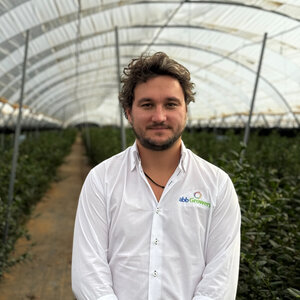PET packaging prevents waste
Consumers prefer to buy blueberries if they have a good color and are without any damage. The right temperature and packaging is needed to ensure that the berries continue to look so nice and delicious. abbGrowers the grower, sorter and packer of blueberries is convinced that PET packaging prevents a lot of waste and is a responsible choice.
The correct temperature
The blueberry is the kind of fruit that is easy to store, if properly cooled. Consider a temperature of 2 degrees Celsius. The right temperature is of great importance during the entire process, from picking to sorting, packing and transporting the berries to the customer.
The choice to pack the berries in a plastic container sometimes raises questions. Are there no other options? Because the environmentally conscious consumer wants to get rid of the plastic.
Not packing blueberries is not a choice, it is simply not an apple that we can put on the shelf separately. Blueberries are fragile and do fall under the soft fruit group for good reason. Packaging is intended to protect the product against external influences. So that the product reaches the consumer undamaged. If we do not use the correct packaging, this will result in loss and an increased CO2 footprint.
The right packaging
"What type of material you use is of great importance for the effect on the shelf life of the product and on the footprint," says Leo Venhuizen, managing director at Guillin Netherlands, the European market leader in PET plastic packaging for the food sector.
“A PET packaging has properties that give the product the best presentation. PET has a lower CO2 emission than carton. The specific weight is low and the packaging can be recycled in the safest way. We supply plastic punnets to abbGrowers that consist of on average 70 to 80% recycled material. This material again consists of different layers. A new layer is wrapped around the recycled material on the inside and outside. Because this way we can see the product through the packaging (clarity of the material), that the container is sturdy (protection) and that we can seal a foil with information on it.
If we compare CO2 emissions from the plastic trays with carton, as can be seen in the table, it becomes clear that the choice of PET is a responsible choice.
There are of course other alternative materials such as packaging made from potato starch. But that too is a debatable choice. Are we going to use a nutrient for packaging, while there are still so many food shortages in the world? Many alternatives are also often more expensive and do not always have the positive effect on sustainability. "
"We should actually change our behavior," says Leo, "It's about seeing used items as a source rather than a waste stream. As a member of the trade association NRK, we also fully support the Rethink think tank established in 2017. Where much information can be found about insights and innovation in our sector.
For further information
Jeannette Westdorp, abbGrowers 077-2300001 of info@abbgrowers.com
 written by
abbGrowers
written by
abbGrowers




